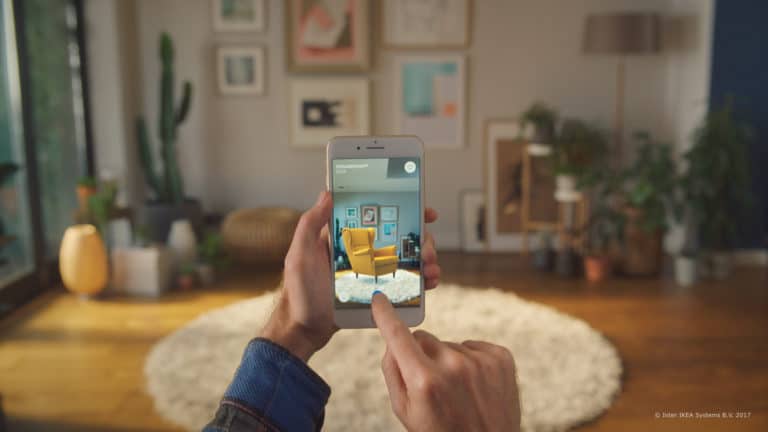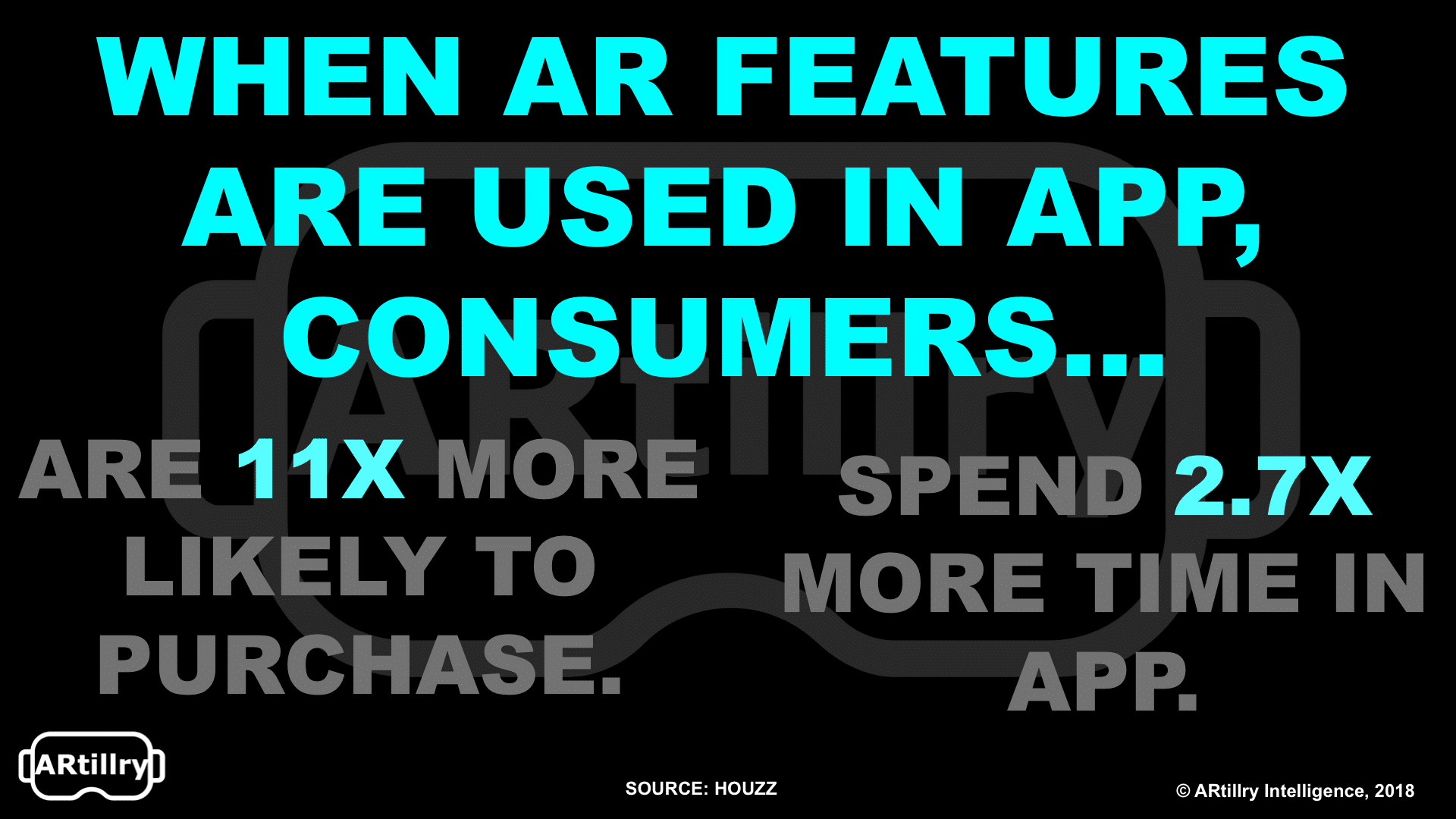
Data Point of the Week is ARtillry’s weekly dive into data from around the XR universe. Spanning usage and market-sizing data, it’s meant to draw insights for XR players, or would-be entrants. To see an indexed archive of data briefs and slide bank, subscribe to ARtillry Pro.
We’ve written a lot about AR’s potential to drive commerce, such as visualizing large items in-home before purchasing. But how’s that actually working? At early stages of AR, it’s going to be all about moving beyond flowery rhetoric in conference presentations and rather proving its efficacy.
With that backdrop, we’re seeing data points trickle out from some of the providers of AR product visualization tools, as well as various forms of AR advertising like Snapchat lenses. And the numbers paint a promising picture for AR’s ability to compel actual customer conversions.
The best figure we’ve seen so far is from Houzz, which reports that its in-app AR furniture visualization tools have boosted conversions 11x and spend level 2.7x. And this comes from a meaningful sample of a million customer interactions with the AR visualization feature of its app.

Similarly, Amazon reports positive results for its AR View feature that lets app users visualize products in-home (side note: “AR as a Feature” is an important trend). Though it isn’t as granular as Houzz’s conversion metric, it has more generally stated that AR can reduce product returns.
Moving from direct commerce to advertising, AR can likewise boost user engagement and lead to conversions. Snapchat recently reported a 15 percent boost in purchase intent and a 9 percent boost in conversions from branded AR lenses. And like with Houzz, this is a large (reliable) sample.
Home Depot’s recent campaign let users click on an ad to launch an AR game to decorate a Christmas tree. It then led users into a conversion funnel to buy stuff. The result: 2+ minute average engagement time and a 12.5 percent click through rate (very high for display advertising).

Beyond eCommerce outcomes, we’ve also examined the opportunity for AR to drive local/offline commerce which is a much larger revenue pie. AR will of course apply to both, and will shine in high value product categories where there’s product complexity or large items (think: cars).
But the challenge is advertisers themselves. They aren’t convinced yet, per survey data we examined recently. Advertisers are typically laggards when it comes to new technology. Many still aren’t fully optimizing and embracing mobile’s true capabilities for ad targeting (e.g. location).
In their defense, AR doesn’t yet have the scale to get excited about. Yes, the hardware installed base is about a half billion units. But the actual number of AR users is closer to 63 million users. That’s further divided by usage frequency… and AR’s short sessions diminish ad inventory.
But these figures will grow as consumer AR adoption does. The second half of the battle is advertiser adoption. And that will be a long period of education and acclimation over the coming years. We’ve seen this movie before (again, mobile/smartphones), and will get there eventually.
For deeper XR data and intelligence, join ARtillry PRO and subscribe to the free ARtillry Weekly newsletter.
Disclosure: ARtillry has no financial stake in the companies mentioned in this post, nor received payment for its production. Disclosure and ethics policy can be seen here.
Header image credit: IKEA
